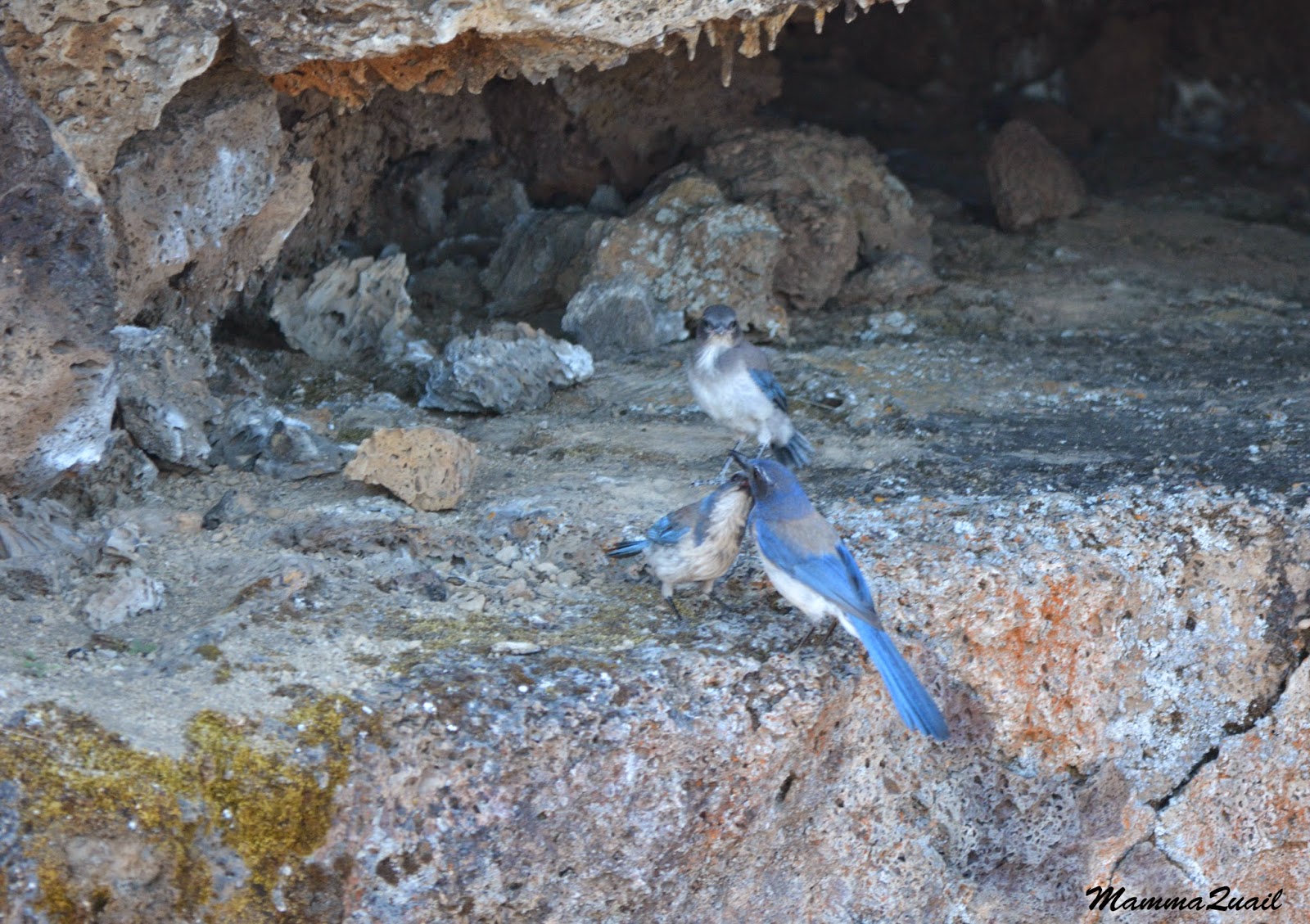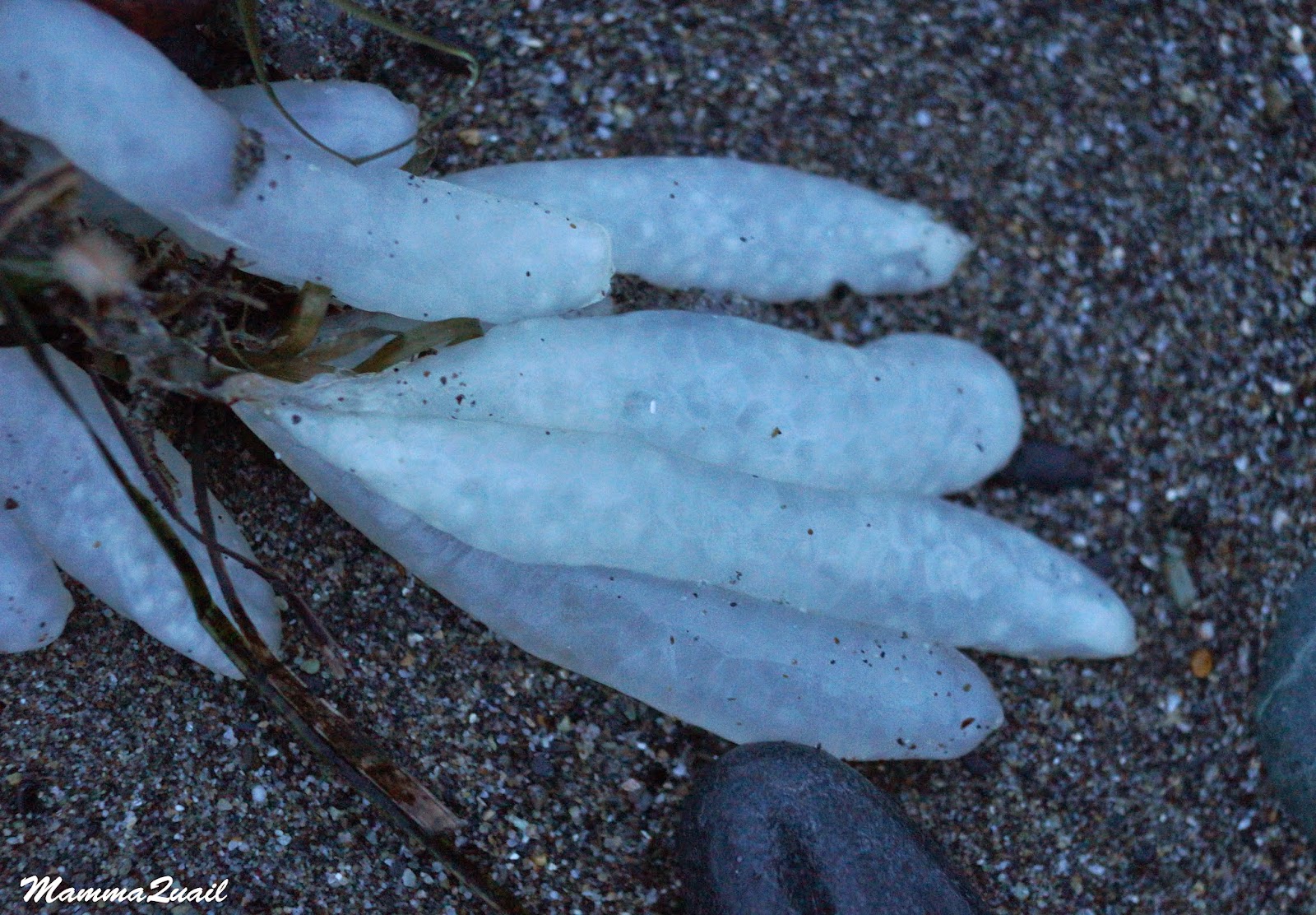Date: July 5, 2014
Place: Lava Beds National Monument, Siskiyou County, California
Coordinates (of Sentinel Cave): 41.708361, -121.511222:
Length (of Sentinel Cave loop): 0.8 mile
Difficulty: easy to moderate
Comment: Underground hikers must have flashlights in there.
Whenever we have visitors from afar I offer to show them California's beauty. And who would resist such an offer? When my sister came with her family last summer they I planned a southern cascade tour with them that included Lassen Volcanic NP, Crater Lake NP and MacArthur Burney Falls SP. In between that tight schedule I managed to squeeze day at Lava Beds National Monument.
It has been nearly a decade since last time I was there. The remoteness of that place has so far eliminated it from other tips we had done in Northern California, but this time I was able to secure it in our schedule.
It might have been the promise of a 50°F place in the middle of a very hot July that won the overall support of this 200 miles diversion from our main route.
 |
| The Modoc Plateau, as viewed from atop Sentinel Cave |
When we arrived there it was nearly lunch time so we stopped for a picnic at Captain Jack's Stronghold.
The first thing I saw when I left the car was these bright yellow flowers near the parking lot.
 |
| Smoothstem Blazingstar (Mentzelia laevicaulis) |
Nearby were milkweed plants in full bloom. These too had attracted my attention.
And not just mine.
 |
| Mexican Milkweed (Asclepias fascicularis) and Parnassius butterfly |
After lunch we headed south to see the caves. We went down the Mushpot Cave which is lit and nicely paved for easy access. Mushpot Cave is a very nice lava tube. It is well lit and is arranged for easy access. The park also offers guided tours in that cave.
 |
| 'Stalactite' rock formation at Mushpot Cave, formed by lava that cooled in mid-drip |
We were looking for a lava tube that was easy to walk through and Sentinel Cave seemed a good one to choose.
The entrance of Upper Sentinel Cave is right by the road - we parked the cars, took our flashlights (that cave isn't lit) and headed underground.
 |
| Upper Sentinel Cave Entrance |
Papa Quail lingered behind to photograph a busy family of scrub jays at the cave's entrance.
 |
| Scrub Jays |
My sister, (and all of us really), was very relieved to go underground. Outside the temperature s were in the 90's but inside the lava tube it was 50 degrees. before long everyone in our group had donned the sweaters I made them take along.
We walked slowly in the darkness, illuminating our way with flashlights. Sentinel cave isn't a very long tube and isn't difficult to traverse. The trail inside is mostly level although narrow at parts.
I didn't take many photos inside the cave. The lava tube experience isn't captured well in photographs anyway.
Emerging on the other side of Sentinel Cave we were once again exposed to the blazing sun. It is amazing how quickly the cave's coolness dissipates in July's noon.
From the far end of the lava tube, or Lower Sentinel, as it's labeled on the park's brochure, there is a nice and easy little trail leading back to the cave loop road. The trail is completely exposed to the sun and the view from there is that of the Modoc Plateau, with peaks on the horizon and a prominent cinder cone butte nearby. There is a trail to the butte's crater that Papa Quail and I hiked on our first visit to Lava Beds years ago. I looked at it longingly. There was no chance of convincing anyone of our party to go up there in that heat.
 |
| Cinder Cone |
 |
| Fleabane (Erigeron sp.) and a hoverfly. |
And where flowers bloom, there go the insects. Flies, bees and butterflies were fluttering all over the place. Butterflies are one of the hot reasons to visit Lava Beds NM during summer. They are magnificent and they are everywhere!
 |
| Leanira Checkerspot (Closyne leanira) on yarrow flowers |
 |
| Leanira Checkerspot (Closyne leanira) |
 |
| Where's that lake I've been looking for? |
 |
| House Finch (male) |
 |
| House Finch (female) |
 |
| Kingbird |
The black rock rubble is an excellent hideout for squirrels. Not all of them hide, though.
 |
| The sentinel at Sentinel Cave |
 |
| Indian Paintbrush (Castilleja affinis) |
But the biggest and most pleasant surprise was a species of mariposa lily I was not familiar with. Beautifully pink, the sagebrush mariposa lily had its flowers sticking only a tad higher than the tall, dry grass. I almost missed it.
 |
| Sagebrush Mariposa Lily (Calochortus macrocarpus) |
 |
| Sagebrush Mariposa Lily (Calochortus macrocarpus) |
Eventually even that trail ended and I arrived at the car well after everyone else in our group. We had planned to see one more cave but on the way there one of my chikas fell asleep so I remained in the car with her while the others descended underground one last time.
One day really isn't enough time to see all the wonders of this lovely and remote park. I love its remoteness, but that also means it'll be some time before I go there again. Perhaps I need to snare more unsuspecting visitors and convince them that this is exactly the part of California they must see. And I have backing for this claim too - my sister and her family had a wonderful time at Lava Beds National Monument :-)
We spent the final daylight hour after leaving Lava Beds at Tule Lake National Wildlife Refuge and then drove south to Redding. The following day, which was our last day of that road trip, we took our visitors to see Burney Falls. From there it was a long and tiring drive home where we would spend only a couple of days before embarking on yet another road trip to Kings Canyon National Park, and all that because my sister claimed that I promised she could see bears in nature.















































